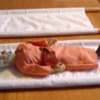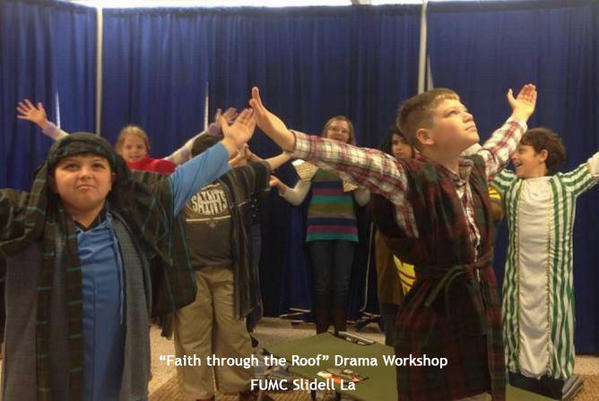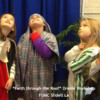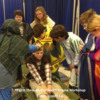Drama, Puppet, and Storytelling Lessons, Ideas, Activities, and Resources for Jesus and the Man Let Down Through the Roof
Post your Sunday School drama, puppet, and storytelling lessons, ideas, activities, and resources for Jesus and the Man Let Down Through the Roof
- Please include a scripture reference, supply lists, sources, suggested age range. age modification, etc.
- Photos are much appreciated! Click "attachments" and upload to your post.
- Please be careful not to post copyrighted materials. Excerpting and paraphrasing is okay. Include attribution.
Jesus and the Man Let Down Through the Roof - The story of the paralytic being brought by four friends and healed by Jesus can be found in three of the four Gospels: Matthew 9:2-8, Mark 2:1-22 and Luke 5:17-26, etc.
Bible lessons and ideas about Jesus and the Man Let Down Through the Roof -with Drama, puppets, scripts, skits, acting, newsroom, etc.
Wormy Note: Amy's Lesson below was moved here during our renovation of this forum. It drew upon and vastly improved on some earlier posted lesson ideas which have since been deleted.
The Man Let Down Through the Roof
Drama Workshop
Summary of Lesson Activities:
A picture book or poster will be created with photos of the children re-enacting the story of Four Faithful Friends. The children will explore what it means to help someone in need.
Scripture Reference:
Mark 2:1-12, also Matthew 9:2-8 and Luke 5:17-26
Memory Verse: 1 John 3:18 (NLV)
FIELD TEST NOTE: This is one of my favorite drama workshops!
We had great fun planning and taking the pictures. Plus, the children really really appreciated getting the books with their pictures the next week, and the parents enjoyed seeing it too! Plus, it wasn't too much work (for me
) -- I had very capable techie-type help to take the pictures and make them into books. --Amy
Additional objectives for the Drama Workshop
At the end of the session, the students
- will be able to relate the story of Four Faithful Friends.
- explore ways to show love to someone who needs it.
Teacher preparation in advance:
- Read the scripture passages and lesson plan and attend the Bible Study.
- Prepare a closing prayer.
- Learn the memory verse.
- Consider what adjustments you will make for different age levels (see notes in this lesson plan and consider ideas of your own). Also confer with the K-1 Shepherd about what Stretchers and Fingerplays you or he/she might use.
- Check out the room before your first Sunday workshop so that you know where everything is located.
- You may want to have an extra person to be the cameraman. Make sure that whoever is using the camera knows how to load film (if applicable) and use it. Make sure you have adequate disk space or film.
- If you are using digital pictures, make sure you know or find a helper who knows how to download and print the pictures with captions in a booklet. (Printing the pictures in “draft” mode will save on printer ink.)
Room set-up:
You will need a clear space in the room so there is space to create the dramatic scenes.
Supply List
- Bible-time costumes
- Sturdy blanket or mat
- Rope
- Piece of black fabric to be the hole
- Library books or illustrated Bibles with pictures of the architecture
- Flip chart or whiteboard and appropriate markers
- Photo equipment:
Digital camera
OR Polaroid camera and film to fit it, posterboard, photo mounting tape or corners - Memento suggestion: “Jesus” stickers
- Shepherd Time: Journal page with memory verse
Presentation
Opening-Welcome and Introductions:
Greet the children and introduce yourself. Wear your name-tag. (Remember, you are interacting with a different group of students each week who may not know you.) Make sure the children are wearing name-tags. If not, ask the shepherd to supply a temporary badge.
We had an opening prayer during the gathering time, but you may open with prayer if you feel led to do so.
Explain the purpose of this workshop: Today we will take pictures of you reenacting the story of some people who worked really hard to help a friend. The pictures will be used to make a picturebook for each of you (you will receive your picturebook next Sunday) or a poster.
Scripture/Bible Story:
Read the scripture: Mark 2: 1-12. (Encourage the children to use their Bibles in looking up verses. As they are turning the pages in their Bibles, remind them that Mark is one of the four Gospels. The Gospels contain the stories of Jesus and are found in the New Testament in the back part of the Bible.)
Discuss the story:
- Talk about the construction of houses in that era: while you did not want a permanent hole in your roof, the roofs were made of wood with sticks and dried mud packed in between the wood beams and could be fixed relatively easily. There was little rain, so the roofs were flat, and often families would sit on their roofs because there was a bit more breeze up high with no walls (so there were stairs that make the roof accessible). Show pictures if you have some.
- I wonder how someone who was listening to Jesus teach would have felt about such a major interruption? Would they have watched quietly?
- I wonder how the man felt as he was lowered to Jesus while everyone was watching? Could he hold on?
- What did the Pharisees think about Jesus forgiving the man's sin? About healing him?
- What did everyone else think about the healing?
Outline key scenes and key phrases from the story on the flip chart. Select from the list on the flip chart six to eight scenes that will tell the story. These will be photographed.
Dig-Main Content and Reflection:
Let’s look for things in our own lives that might help us understand how the people in the story felt and why they acted that way.
- How would you feel if your best friend needed help, but there were lots of people in the way?
- Have you ever been frustrated by obstacles of some sort when you wanted to help a friend? (Are the people in the way always a crowd, like in this story, or are they sometimes blocking you by what they might think or say?)
- What happened?
- What did you do?
Drama warm-up exercise:
We are going to take pictures to show our story, right? Think about photographs. Is there any sound? Is there any movement? No, that’s right. So we will need to show what is happening and what we are thinking and feeling with just our faces and bodies. Let’s all stand and be statues. Show me:
- carrying something
- carrying something lightweight
- carrying something heavy (remember, no sound or movement once you have decided on a pose)
- sadness
- joy (no moving!)
- worry
- anger
- confusion
- trying to see from the back of a big crowd (remember, no moving!)
- trying to hear someone far away
- looking up to see what that scratching noise is — are you puzzled? afraid?
- standing and speaking from the front of a large crowd (no sound either!)
- surprise
- amazement (is that different from surprise?)
- walking for the first time in a very long time (or ever)
- digging a hole (still no moving)
- glorifying God
Before we begin taking pictures, let’s think about our “stage.” Can we knock a hole in our ceiling and lower someone down for that scene in the story? How else can we show what is going on? [Take suggestions from students, discuss, and arrive at a solution. If they need a discussion kick-start, talk about showing the scene with two pictures, maybe one showing the crowd looking up (but don’t show the ceiling) and one showing the four friends holding ropes and looking down (but don’t show the floor in the photo).]
Assign parts and run through the scenes listed on the flip chart, deciding where to stop the action to form a tableau that will tell the story without words. Work on facial expressions that “say something,” since the pictures will be silent.
FIELD TEST NOTE: We did not have time to run through this twice. We took the pictures the first time around.
After the class is happy with the selected scenes,
- put on costumes (if different people will have the same part in different pictures, make sure a character is always wearing the same costume).
- review the list of pictures to make sure together they tell the complete story. Add other scenes as necessary.
- run through it again and take the pictures.
If you are using a digital camera: write captions for each picture. Print a copy of the book for each member of the class and one for the classroom or church library. Make sure to list the participants’ names. (It may be necessary to deliver these next week. If so, print extra copies so people who were absent today get a copy of the class book, too.)
If using Polaroid photo option: Mount the photos on posterboard and write meaningful captions for each one. Make sure to list the participants’ names. Hang the poster in the hallway for everyone to enjoy.
Reflect:
Pulling it all together (closing discussion):
- What might have happened if the friends hadn't helped the man who was paralyzed?
- What do you think the man will do now?
- What might the friends do?
- What might the people who saw all this do?
Review the memory verse. (“Add-a-word” from Hide God’s Word)
Divide the class into two groups. Group One says the first word of the verse. Group Two repeats that word and adds the second word. Then it is Group One’s turn again and they say the first three words of the verse. For example:
1: Let
2: Let us
1: Let us stop
2: Let us stop just
1: Let us stop just saying
2: Let us stop just saying we
1: Let us stop just saying we love
2: Let us stop just saying we love each
1: Let us stop just saying we love each other
2: Let us stop just saying we love each other; let
1: Let us stop just saying we love each other; let us
2: Let us stop just saying we love each other; let us really
1: Let us stop just saying we love each other; let us really show
2: Let us stop just saying we love each other; let us really show it
1: Let us stop just saying we love each other; let us really show it by
2: Let us stop just saying we love each other; let us really show it by our
1: Let us stop just saying we love each other; let us really show it by our actions.
2: Let us stop just saying we love each other; let us really show it by our actions. 1 John 3:18
See how fast you can say it and get it right. [Depending on the mood of the crowd and the age of the group, if they make a mistake keep going or start over.]
Shepherd Time:
What is our memory verse? Can anyone say it yet? [“Let us stop just saying we love each other; let us really show it by our actions.” 1 John 3:18]
Let’s think about what the verse means. What is “action?”
What are some actions words?
Have you ever seen someone say they love you or someone else and then they did something that REALLY made you wonder if their love was true? Does anyone want to share?
Think about someone you say you love. Maybe your mother or father, a friend, a neighbor, a sister or brother, a far-away relative. How can you show them that you love them? Think about a time they may really need some love. What action(s) can you take to show them your love?
On your journal sheet with the memory verse, either list some ways you can show this person you love them (use action words) or draw a picture of you doing something that shows this person that you love them.
This is meant to be a time of reflection and introspection. Writing about faith helps clarify lessons. In addition to the suggested activity, children may draw pictures relating to today’s scripture or memory verse, list highlights of the day’s activities, or rephrase the memory verse. The journal pages will be saved and given to the children at the end of the school year.
You may want to provide an extra activity or worksheet for children who finish their journals quickly, such as coloring sheets, crossword puzzles, word searches, games. See the Workshop Leader’s Background Notes and rotation.org for ideas.
Before noon, ask the students stop journaling for a moment and sit quietly for prayer so that they can leave when their parents arrive. Then allow them to finish journaling.
Closing:
Pray that God will help the children (and adults leaders, too) be active with love in their friends’ and families’ lives.
Additional Suggestions:
You will need to decide how best to adjust the lesson for older and younger students. Keep the children active and involved in activity. Do what works for you and the children. Some ideas:
Older children:
- Select one child to be “director” and set up each picture, or pick a different child as director for each picture.
Younger Children:
- For classes composed primarily of pre-readers, show the children how to find the passage in the Bible (for example, “To find the Gospels, open the Bible in the middle and then open the second half in the middle - you should end up in Matthew, Mark, Luke, or John. Our passage is in Mark.") and then have them do it. After everyone has found the passage, have them close their Bibles and listen while you read.
- For the memory verse game, have a poster with the words and point to the words to help them remember how far to go. If they make a mistake, keep going. Try the whole thing again once you finish it once, if time permits.
- Offer to let the younger children dictate the list of ways they can show love for their journal page as you write it down.
Sample listing of scenes and captions used in booklet with digital photos:
Scenes:
1 Crowd listening to Jesus
2 Four friends carrying paralyzed man
3 Digging the hole in the roof
4 Down through the roof
5 What’s coming through the ceiling?
6 Jesus forgives
7 Teachers of the law are shocked!
8 Jesus tells the man to get up
9 The man gets up
10 Everyone praises God
1 -- Several days later Jesus returned to Capernaum, and the news of his arrival spread quickly through the town. Soon the house where he was staying was so packed with visitors that there wasn’t room for one more person, not even outside the door. And he preached the word to them.
2 -- Four men arrived carrying a paralyzed man on a mat.
3 -- They couldn’t get to Jesus through the crowd, so they dug through the clay roof above his head.
4,5 -- Then they lowered the sick man on his mat, right down in front of Jesus.
6 -- Seeing their faith, Jesus said to the paralyzed man, “My son, your sins are forgiven.”
7 -- But some of the teachers of religious law who were sitting there said to themselves, “What? This is blasphemy! Who but God can forgive sins!”
8 -- Jesus knew what they were discussing among themselves, so he said to them, “Why do you think this is blasphemy? Is it easier to say to the paralyzed man, ‘Your sins are forgiven’ or ‘Get up, pick up your mat, and walk’? I will prove that I, the Son of Man, have the authority on earth to forgive sins.” Then Jesus turned to the paralyzed man and said, “Stand up, take your mat, and go on home, because you are healed!”
9 -- The man jumped up, took the mat, and pushed his way through the stunned onlookers.
10 -- Then they all praised God. “We've never seen anything like this before!” they exclaimed.
Scripture quotations are taken from the Holy Bible, New Living Translation, copyright © 1996. Used by permission of Tyndale House Publishers, Inc., Wheaton, Illinois 60189. All rights reserved.
This lesson was written by Amy Crane for River Community Church
Prairieville, Louisiana.
Copyright 2003 Amy Crane. Permission granted to freely distribute and use, provided the copyright message is included.














